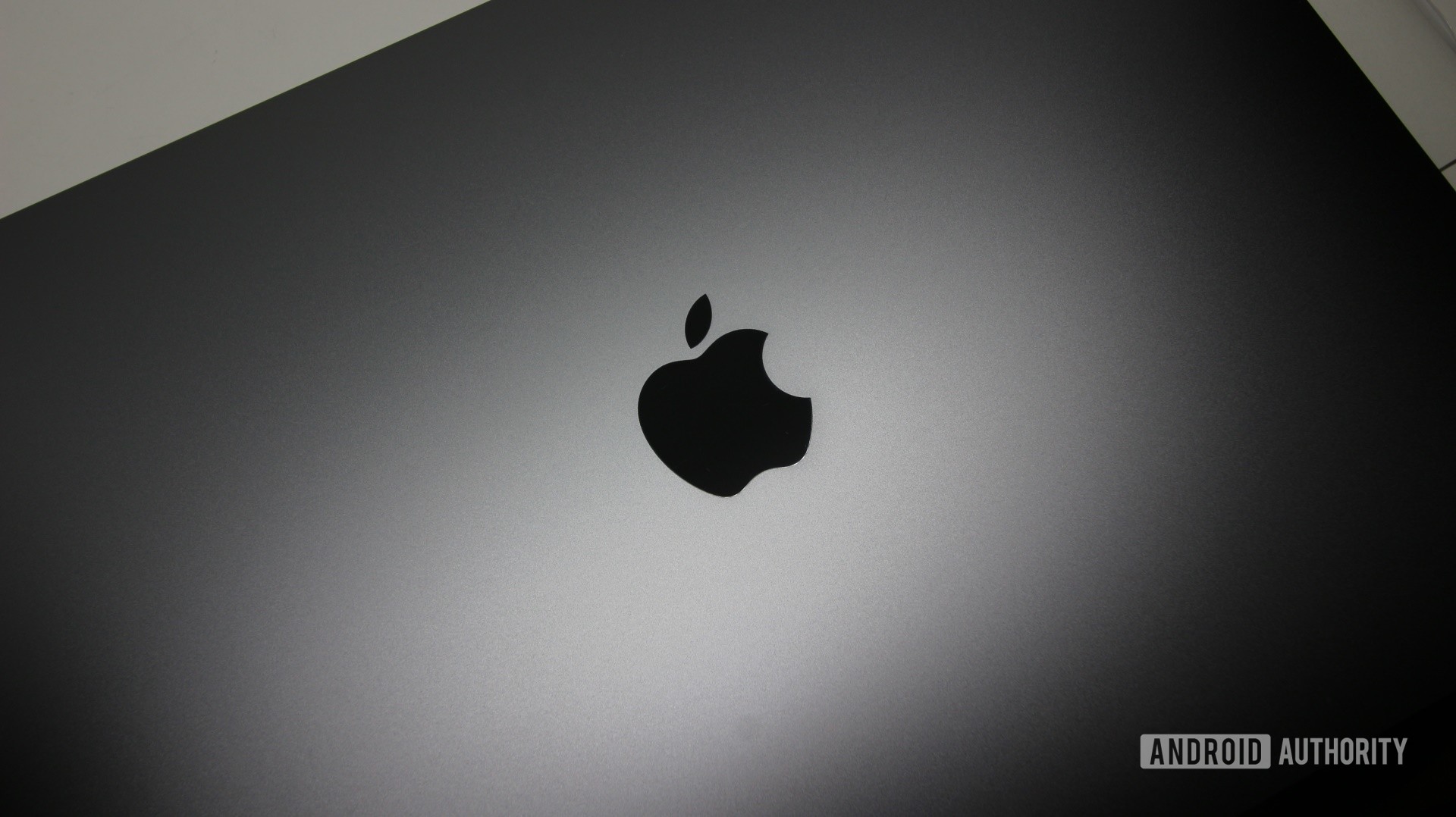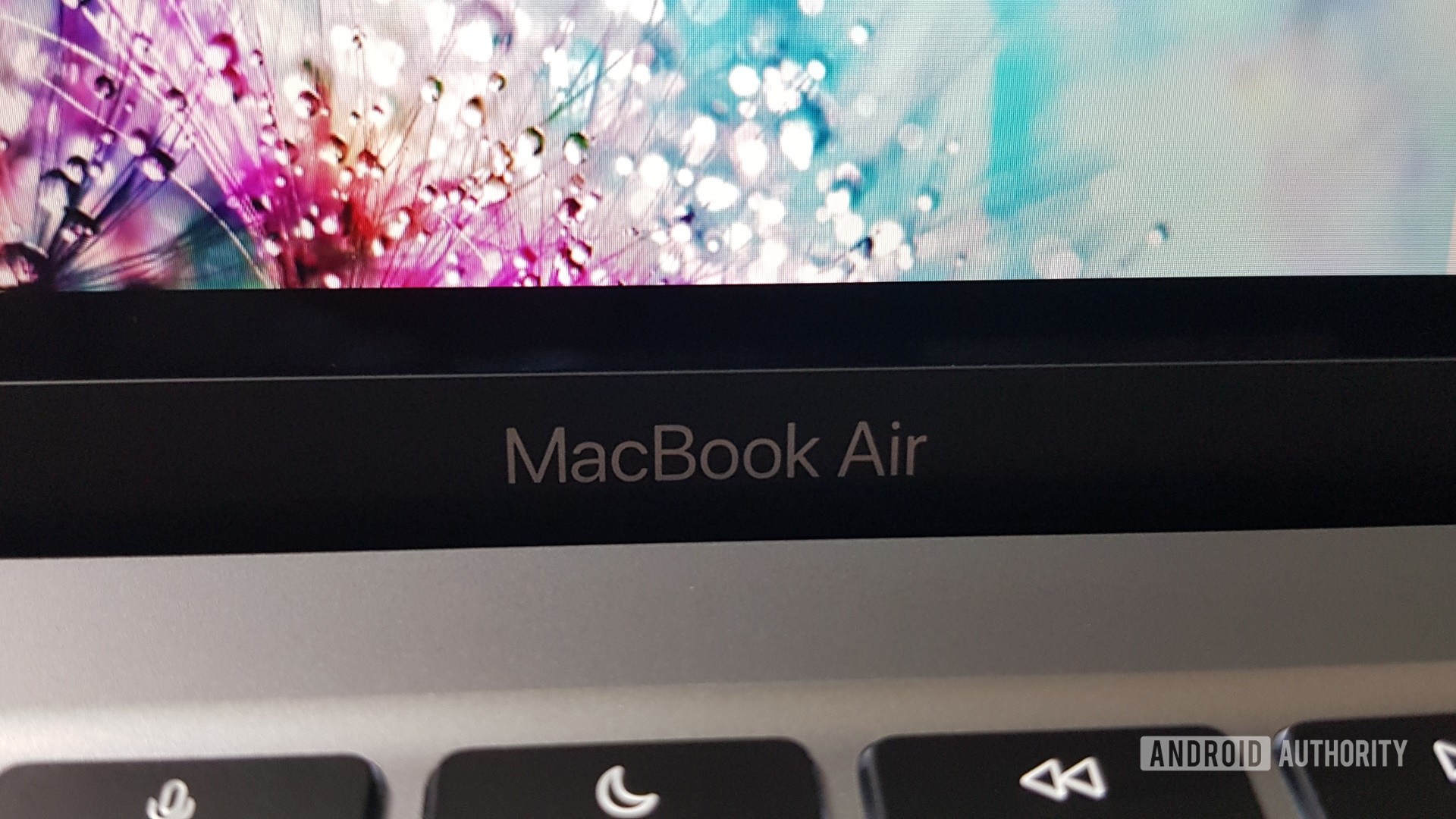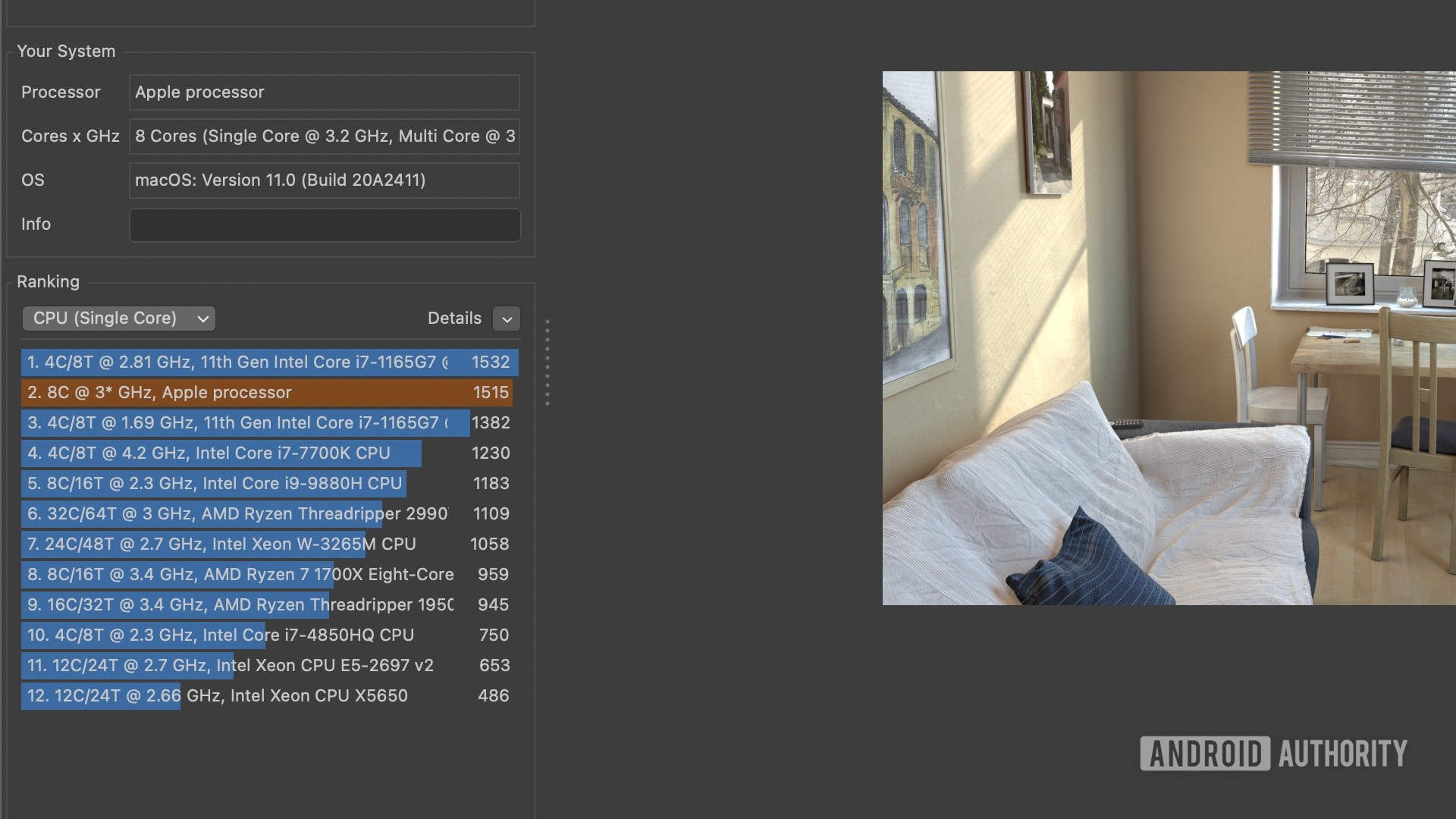Affiliate links on Android Authority may earn us a commission. Learn more.
Apple M1 tested: Performance benchmarks and thermal throttling, explained
Apple raised a lot of eyebrows in the summer of 2020 when it announced that it would stop using Intel processors. Its Mac computers would instead migrate to its own processors based on the Arm Instruction Set Architecture (ISA). Intel and AMD have been dominant in the PC laptop and desktop market for decades. For more than 15 years, Intel has been the sole supplier of processors for Apple’s Mac range. However, Apple has a long history with Arm.
Arm specialized in building energy-efficient processors that only used a few watts of power. This meant they were perfect for smartphones and tablets. From the very first iPhone right up until today, Apple has used Arm-based processors in its mobile devices. With that wealth of experience and expertise, the Cupertino company concluded that it could build processors that were energy-efficient, but also offered competitive performance. It, therefore, decided to expand the reach of its smartphone and tablet processors and move into the PC market.
And so the Apple M1 processor was born. It is the SoC found in the 2020 MacBook Air, 13-inch MacBook Pro, and Mac Mini. It was also the first of a series of processors that saw Apple (almost) completely replace Intel in every Mac model. Currently, we have just one Mac, the Mac Pro, left to get the Apple Silicon treatment.
This transition was said to take about two years and the three M1-based devices were just the beginning. We saw Apple reveal the successors to the M1 chip, the M1 Pro and M1 Max which are now shipping in the new 2021 MacBook Pros. Following that, was the M1 Ultra, which is now shipping in the Mac Studio.
But the question is, is the performance of the M1 competitive, or did Apple make a mistake? Let’s find out!
Apple M1 specs: At a glance

The Apple M1 is an SoC. That means it has a CPU, a GPU, a Neural Engine, and I/O (like Thunderbolt). It has 16 billion transistors and is manufactured using a 5nm process.
The M1 has four performance cores, each designed to run a single task as efficiently as possible while maximizing performance. Four efficiency cores handle lighter workloads. There is also an eight-core integrated GPU. According to Apple, the M1 offers up to 3.5x faster CPU performance, compared to the 1.2GHz Intel Core i7-1060NG7 found in the previous generation of MacBook Air.
If you want more information on the Apple M1 then you might find my Apple M1 and new Macs video useful.
Apple M1 benchmarks

To test the performance of the Apple M1, I am using a MacBook Air with the 8-Core CPU/8-Core GPU variant of the processor along with 8GB of RAM and 512GB of storage.
According to the official Geekbench results, the MacBook Air with the M1 scores 1,690 for the Single-Core test. That means that the new MacBook Air has better single-core performance than every Intel Mac that exists. Not just every Intel MacBook Air, but every Intel-based Mac.
The new MacBook Air has better single-core performance than every Intel Mac that exists.Gary Sims
For multi-core, the M1-based MacBook Air scores 7,304. With just eight cores, this isn’t going to be earth-shattering. The late 2019 Mac Pro has a 28-core Intel Xeon processor, so the mere eight-core MacBook Air isn’t going to beat it. However, it does beat every other Intel-based Mac that isn’t a Mac Pro. The only exceptions are the very high-end 27-inch iMacs from 2019 and 2020. Very impressive for Apple’s first laptop processor!
Cinebench is a real-world test that evaluates a computer’s processor by running CPU-only rendering tasks and measuring the performance. Cinebench R23 gives the M1-based MacBook Air a score of 1,515 for single-core performance. That is higher than the Intel Core i7-7700K, higher than the Intel Core i7-1060NG7, better than AMD Ryzen Threadripper 2990, and just below the 11th generation Intel Core i7-1165G7.

As with Geekbench, the multi-core score isn’t going to be revolutionary. It scores 7,326, which interestingly beats the Intel Core i7-7700K and the Intel Core i7-1060NG7 (from the previous generation of MacBook Air). But there are plenty of processors with 16, 24, 32, or more cores. These naturally score higher.
Opinion: Don’t be duped by performance, Apple’s M1 silicon is all about platform control
Speed Test G PC
Speed Test G is our custom performance testing system that takes the best parts of traditional speed tests and combines them with the benefits of benchmarks. It runs primarily on Android (although there is a version for iOS) and measures performance by launching a series of apps that perform both single-core and multi-core tasks. As in real life, not everything is single-core, but neither is everything multi-core.
Speed Test G PC, a reimagining of Speed Test G — this time for desktops and laptops — gives the MacBook Air a run time of 56 seconds. That is faster than the 2019 MBP 16-inch with the i9-9980HK and faster than the 2019 MBP 13-inch with the i7-8569U.
Newer silicon: Apple MacBook Pro (2021) review
Thermal throttling
The MacBook Air has no fan or active cooling. This makes it a perfect candidate for testing the thermal properties of the M1 chip. Does the processor slow down when it heats up? If so, by how much?
After a night of sitting in my office, the MacBook Air had a surface temperature of around 20°C. I then ran several programs to stress the CPU and GPU to the maximum. This included Speed Test G PC and the Unity benchmark from the mobile version of Speed Test G (but built for the M1 on macOS). It was also connected to the mains, generating heat as a side product of charging. As the processor started to heat up, the bottom of the laptop became warm (due to the passive cooling), particularly in the center towards the back. This heat spread slowly outwards from that middle point.
Apple has managed to jump directly into the laptop and the small desktop market at a competitive level.Gary Sims
After an hour of heavy load, the temperature on the underside of the device hit 41°C. Additionally, the battery stopped charging (although it wasn’t full or even near the smart battery level of 80%). This was due to the heat. There is likely some software implementation that detects the thermal situation and stops the charging to ensure that the device doesn’t become too hot. Once the stress on the processor was reduced, the laptop started charging again.
While the laptop was nice and warm, I ran the multi-core test from Cinebench R23 again. The result was 7,110, down from 7,336 — less than 5%.
What this means is that the processor generates heat under heavy loads, as does every processor, but the passive cooling is able to disperse that heat efficiently. The overall impact on performance is minimal.
Apple M1 tested: The verdict
Apple has managed to jump directly into the laptop and the small desktop market at a competitive level. The M1 is fast. Is it the fastest chip on the planet? No, but it isn’t designed to be. Is it the fastest processor ever used in a Mac laptop? Absolutely. Will it handle your workload? Almost certainly. The recently revealed M1 Pro and M1 Max are more proof that Apple is going in the right direction.
Opinion: It’s Apple’s best laptop, but you probably don’t need the new MacBook Pro
It also means that Apple successfully made the first steps in replacing Intel processors in its Mac range. The latest iterations of Apple Silicon processors that were recently revealed, are yet to be tested by us, but they look promising. Apple is trying to loosen Intel and AMD’s grip on turf that is traditionally their stronghold. Can Apple do it? If the M1 is a measure of the company’s potential then the answer is a resounding yes.